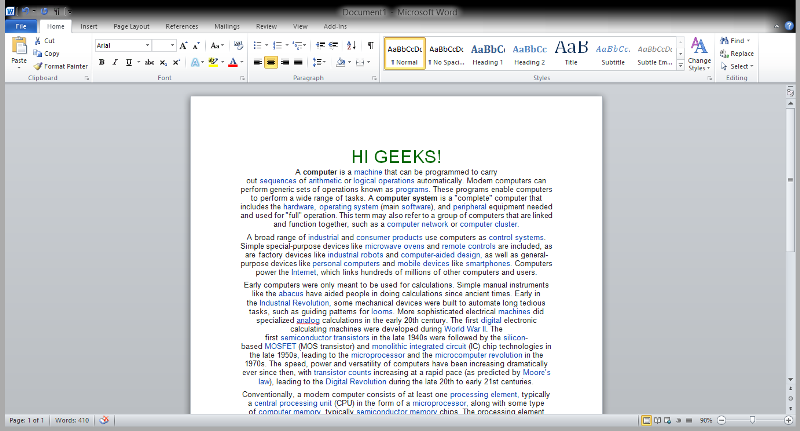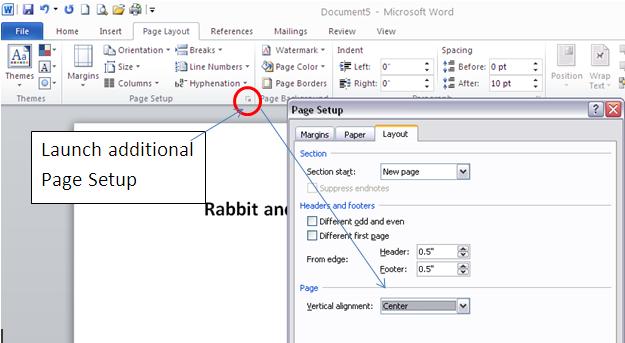


You can also set some of the options for headers and footers in the “Headers and footers” section. On the “Layout” tab, set section break behavior in the “Section” area, if desired. In the “Paper Source” section, set to which tray of your printer you will print the first page of your document if you have a multi-tray printer, and then make a tray choice for the subsequent pages. On the “Paper” tab in the “Page Setup” dialog box, select the size of the paper onto which you will be printing this document. Page Setup in Word- Tutorial: A picture of the “Margins” tab within the “Page Setup” dialog box in Microsoft Word 2013. In the “Pages” section, select the method for printing multiple pages from the “Multiple pages:” drop-down. In the “Orientation” section, select either a portrait or landscape page orientation for your document or document section. You can also use the “Gutter position:” drop-down to select the side of the document where you want the gutter margin to appear. You can also set the “Gutter” margin, which is the amount of wasted space allotted for binding, if you are printing a document that you wish to bind. Set the top, bottom, left, and right margins to the length or width you desire by either typing the measurement units into the boxes provided or by using the spinner arrows at the right end of each spinner box. On the “Margins” tab, you can set the margins for the document. This dialog box consists of three tabs: “Margins,” “Paper,” and “Layout.” Let’s examine the page setup options you can set in this dialog box. Here you can change any aspect of the document setup you choose. In addition to these buttons, you can also click the “Page Setup” dialog box button in the lower right corner of the “Page Setup” group to open the “Page Setup” dialog box. The “Page Setup” group on the “Page Layout” tab of the Ribbon contains buttons that let you make changes to the page setup of the document. However, vertical alignment affects all text on the page, so you cannot use it to align single passages like you can with the left/right alignment options.Page Setup in Word lets you change the structure and layout of pages in a Microsoft Word document.

This setting is very useful when you only need a little text in the middle of a page (e.g., when creating a cover page for an essay or business report).

#Microsoft word center page top to bottom full#
Click the arrow in the bottom right to open the full layout options.Go to Layout > Page Setup on the main ribbon.Instead, you can access the vertical alignment options in Word as follows: Thank you for subscribing to our newsletter! But while this will work, it can be hard to align things perfectly, which can make formatting messy. Often, when people want text to appear halfway down a page, they will just hit “Enter” repeatedly. Vertical alignment refers to the position of text between the top and bottom margins of a page. Adjusting Vertical Alignment in Microsoft Word But how do you control the position of text between the top and bottom margins? To do this automatically, you will need to access the vertical alignment options instead. And to apply them, all you need to do is select the relevant text and click the desired alignment. These options are all available in the “Paragraph” section of the “Home” tab in Word. Justify – Each line begins at the left margin and ends at the right margin.Align Right – Aligns text with the right margin.Align Left – Aligns text with the left margin of the page.The basic alignment options in Microsoft Word reflect this: If you think about text alignment at all, you probably think of the position of text between the left and right margins of a page. Check out our guide below to see how this works.
#Microsoft word center page top to bottom how to#
Microsoft Word Tips: How to Control Vertical Alignmentĭo you need to make text appear halfway between the top and bottom of a page in Microsoft Word? Then you need to adjust the vertical alignment.


 0 kommentar(er)
0 kommentar(er)
